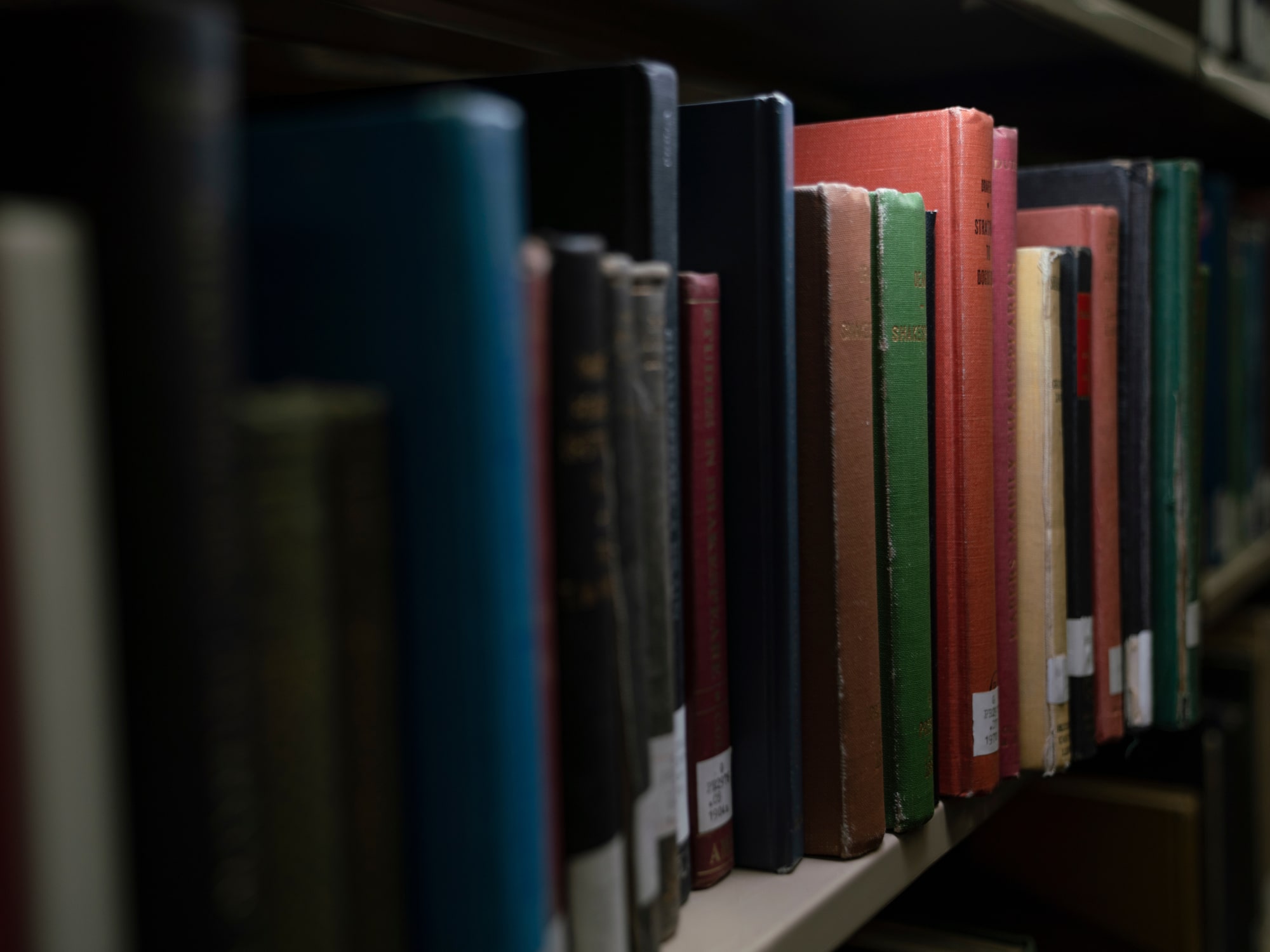
Published on
Interview with the vamp… I mean, librarian
Five specialised libraries. Over 3.3 million bibliographic records. Sixty-three kilometres of shelving. 1.4 million visits annually. These statistics describe the libraries at ANU — some of the best in Australia. But they're so much more than statistics and certainly aren’t stuffy or old-fashioned no-talking zones overseen by light-deprived librarians.
Overview
- Our five specialist libraries are packed with essential resources for current students.
- While quiet spaces exist, many areas in the libraries at ANU are designed for socialisation and collaboration – so are definitely not stuffy places anymore.
- Our team of passionate, helpful people are always ready to help you get the most out of your library learning experience.
Engaging, vibrant and inspirational spaces, our libraries are filled to the brim with excited chatter and quiet contemplation (depending on how you like to study), and with an overwhelming aura of wonder at the joy of learning.
Heading up client services is Tom Foley. His job is to oversee the five library branches and the University’s print repository. At ANU for over six years, his enthusiasm for our resources is abundant. With qualifications in information studies and adult and vocational education, as well as experience in a range of libraries, including the library of the Scottish Parliament in Edinburgh, he brings loads of library wisdom wherever he goes!
We recently caught up with Tom to gain some insights into our libraries' world-class resources and to share his passion with you for helping every ANU student make the most of their educational journey.
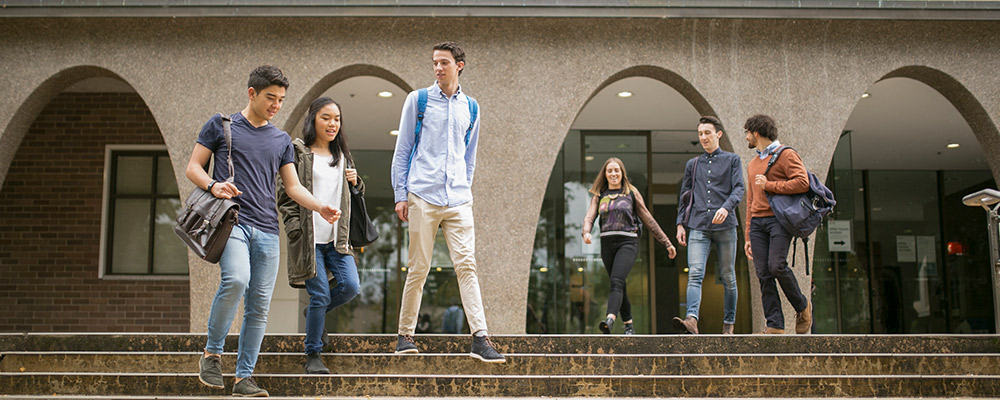
Three students talking as they descend the steps of the Chifley Library.
What makes the branches of the ANU library so unique?
Firstly, Tom says, in his (obviously unbiased) opinion libraries are an integral part of any learning institution.
"That's the case whether they're in a primary institution, where we first learn to read, or in a secondary or tertiary institution where we continue our learning.
“But ANU is unique because our five libraries focus on particular resource streams. We have the Art and Music Library, the Law Library and the Chifley Library – with its arts, social sciences, business and economics resources. Then there’s the Hancock Library – with science, IT, engineering and medical resources and the Menzies Library, which focuses on the Asia-Pacific region. There is also the ANU Print Repository, which houses over 9000 documents off-site,” says Tom.
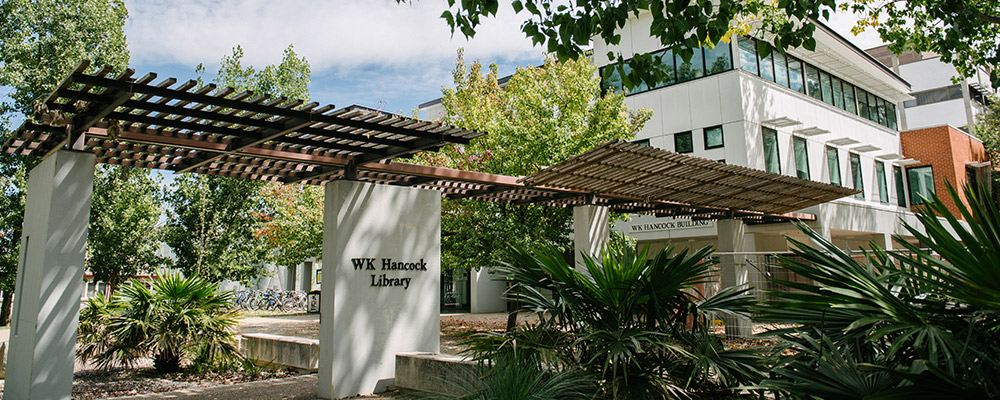
The exterior of the Hancock Library is surrounded by lush trees and bathed in sunlight.
How do the libraries support students, including those new to campus life?
“There’s no doubt the world has transitioned from printed resources to digital ones over the past few decades. But our libraries still maintain respect for the printed word. Mainly because we house over 44,000 rare books — some dating back to the 15th century!
“But digital resources are extremely valuable and practical, and we have a team that actively digitises our collections. Over 155,000 resources are now digitised and our system has 2.4 million downloads annually.”
Tom says ANU also have a responsibility to make its resources accessible.
"This includes material being produced by our staff, who we work very closely with to give them a platform on which to share their work. Research, critical thinking, teaching resources — these are all readily available to virtually anyone, anywhere in the world, whether it’s digitally or printed by our publishing arm, ANU Press.”
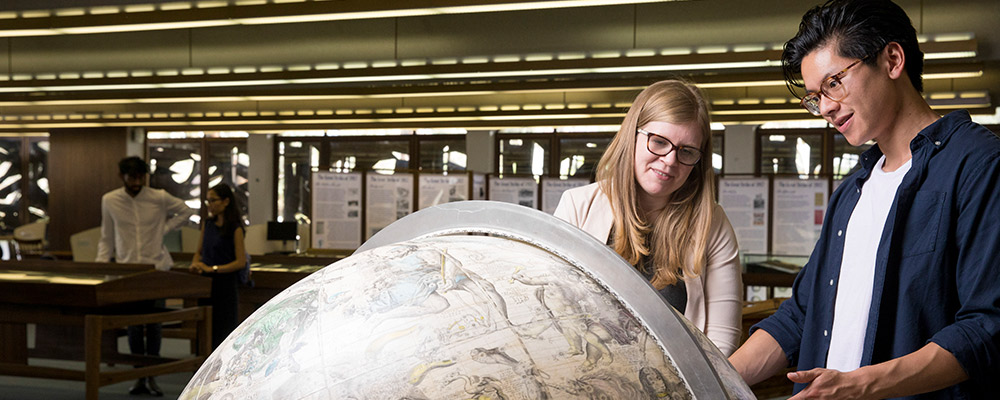
Students investigate a globe at the Menzies Library.
How do students access the libraries’ resources?
Tom says this is as simple as logging in with a student number.
"In terms of digitised resources, we’ve recently upgraded to a new online access system called Leganto which works directly with our current system Wattle.
“Leganto has an amazing discovery interface that provides additional online capacity for saving materials and searches. It also enables us to work with academic staff to create directly accessible students’ reading lists – that include not-yet-published work – from the learning management system. It’s opened up a whole new world of accessible learning for our students."
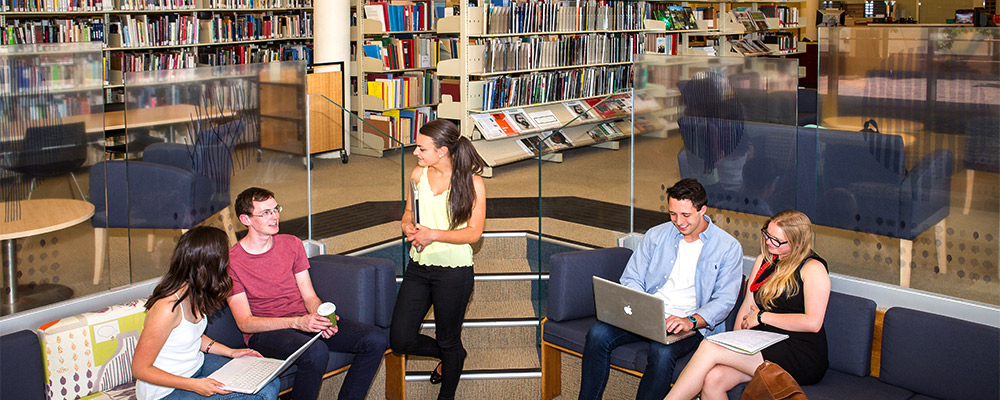
Students collaborate at the Art and Music Library.
What other resources – besides reading material – does the Uni provide?
“Each of our library branches offers students Macs and PCs and loans out laptops,” Tom says.
"On the technology side, our Treventus ScanRobot 2.0 can scan up to 2,500 pages per hour, turning a book’s pages with air, so it’s suitable for scanning some of our most fragile books. We also deliver 35,000 library skills training sessions to students every year. Learning never stops at ANU!”

ANU Print Repository is a vast archive of print serials comprising almost 3,300m2 of floor space.
Can students visit the libraries at any time?
Tom says our libraries are like second homes to some students. It’s not unusual for staff to see students walking across the Chifley Library in their Ugg boots at 3am.
“Four out of five of our library branches are available to students 24 hours a day, seven days a week, and online, from anywhere in the world. All they need is their student card to access them. And while it's not the norm, our staff respect that University life can be tough, so offer support to students in the libraries in whatever way they can.”
How do staff help first-time library users?
"The first step is talking to students at the information desk. Staff are warm, welcoming and passionate about everyone having the best possible experience in the libraries.
“If talking to staff is a little daunting at first, we also have a team of Student Ambassadors with first-hand knowledge of the library experience that you can just approach when you arrive – and a 9 am-5 pm online chat service where students can talk directly to a staff member. And no, the person who talks to you is not an AI chatbot. They’re the real deal,” says Tom.
Can you share any library secrets that prove university libraries aren’t stuffy institutions anymore?
“I have a number of secrets I can’t talk about, to protect the innocent (laughs).
“I can definitely say that there have been lifelong relationships formed in our libraries. The evidence often comes out on graduation day when students come into spaces they’ve sat in for three, four, five years and have photos taken with their parents and their study partner … who is now their boyfriend/girlfriend!
“We’ve also discovered undisputed evidence of the libraries acting as catering facilities. When the Chifley Library flooded five years ago, staff helped with the clean-up. Opening drawers that had remained closed for some time unearthed various unusual items, from frypans to the odd can of baked beans. We have facilities for tea and coffee making and microwaves for warming up meals, but that was a classic case of resourcefulness!”
What are some of the misconceptions students might have about libraries?
“Probably the biggest misconception is that you have to be quiet all the time. Obviously, we have quiet zones, but we also have spaces that encourage socialisation and collaboration. Spaces where you can grab a coffee with a group of friends and debate politics, philosophise about scientific theory or marvel at the creativity of wellknown musicians and artists.
"Our libraries are wonderful hubs where students are welcomed, learning is encouraged, individuality is respected and friendships of all kinds can blossom.”
Can you see yourself studying in the libraries at ANU? Then check out some of our great degrees.



